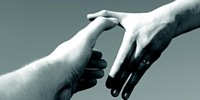Sinus is a condition consisting of inflammation of the paranasal sinuses, which may occur result of infection, from bacterial, fungal, viral, allergic or autoimmune issues. A sinus infection can cause a headache or pressure in the eyes, nose, cheek area, or on one side of the head. Sinus infection person also face the problem like a cough, a fever, bad breath and nasal congestion with thick nasal secretions. Sinus is also caused due to colds, air pollutants (allergens), extreme climatic conditions, weak immune system, stress, dehydration, excess smoking, injury of the nasal bones and dental infection.
Sinus infection is further classified into acute, sub acute and chronic, depending upon the duration of the condition. Acute (sudden) sinusitis lasts for less than 4 weeks, sub-acute for about 4-6 weeks, and chronic (long-term) sinusitis, as the name suggests, usually lasts for more than 12 weeks. Other signs include thick yellow or greenish nasal discharge, cough, fever, bad breath, and pain in the upper jaw, fatigue, sore throat, problem in breathing through the nose, loss of smell and very rarely, a burning sensation in the eyes. In severe cases, sinus infection may lead to osteomyelitis, brain infection and meningitis.
Humans have four pair of these cavities each referred to as the:
The maxillary sinuses are in each cheekbone.
The frontal sinuses are on either side of your forehead, above your eyes.
The smaller ethmoid sinuses are behind the bridge of your nose, between your eyes.
The sphenoid sinuses are between the upper part of your nose and behind your eyes.
Sinusitis Symptoms
- pain and pressure in your face, which is worse when you lean forwards
- a blocked nose with green or yellow mucus, which can drain down the back of your nose into your throat and may cause a sore throat and cough
- a headache when you wake in the morning
- a fever
- earache
- toothache or pain in your upper jaw
- Frontal sinusitis can cause pain just above your eyebrows, and your forehead may be tender to touch.
- Maxillary sinusitis can cause your upper jaw, teeth and cheeks to ache and may be mistaken for toothache.
- Ethmoid sinusitis can cause pain around your eyes and the sides of your nose.
- Sphenoid sinusitis can cause pain around your eyes, at the top of your head or in your temples. You may also have earache and neck pain.
Sinus Infection (Sinusitis) treatment
1. Drink hot liquids. One of the best ways to unclog sinuses is to drink hot tea -- black, green, herbal or decaffeinated, it doesn't matter -- or hot chicken soup throughout the day. Drink enough so that your urine turns light in color. These hot liquids help moisturize your mucous membranes, speeding up the movement of your cilia and thus washing mucus out of your sinuses more quickly. Sorry, java lovers, but hot coffee isn't nearly as effective.
2. Apply warm compresses to your face. Do these three times a day for five minutes. A small towel soaked in warm water, then placed over your face below and between the eyes, will help increase the circulation in your sinuses, which will also help speed up the movement of your cilia.
3. Irrigate your sinuses. For 3,000 years, yoga practitioners have kept their sinuses healthy through the practice of sniffing a saltwater solution rapidly in and out of their nose at low pressure. Caution: Don't try this unless you have been taught how to do it.
4. Clear your sinuses with aromatherapy. To help open up congested nasal passages and sinuses, drop some eucalyptus or menthol oil into a bowl of hot water, then breathe the vapors -- or simply open up a jar of either and inhale the fumes directly.
5. Dustproof your bedroom. Dust and dust mites can wreak havoc on your mucous membranes, especially when you're asleep and your cilia are at rest.



